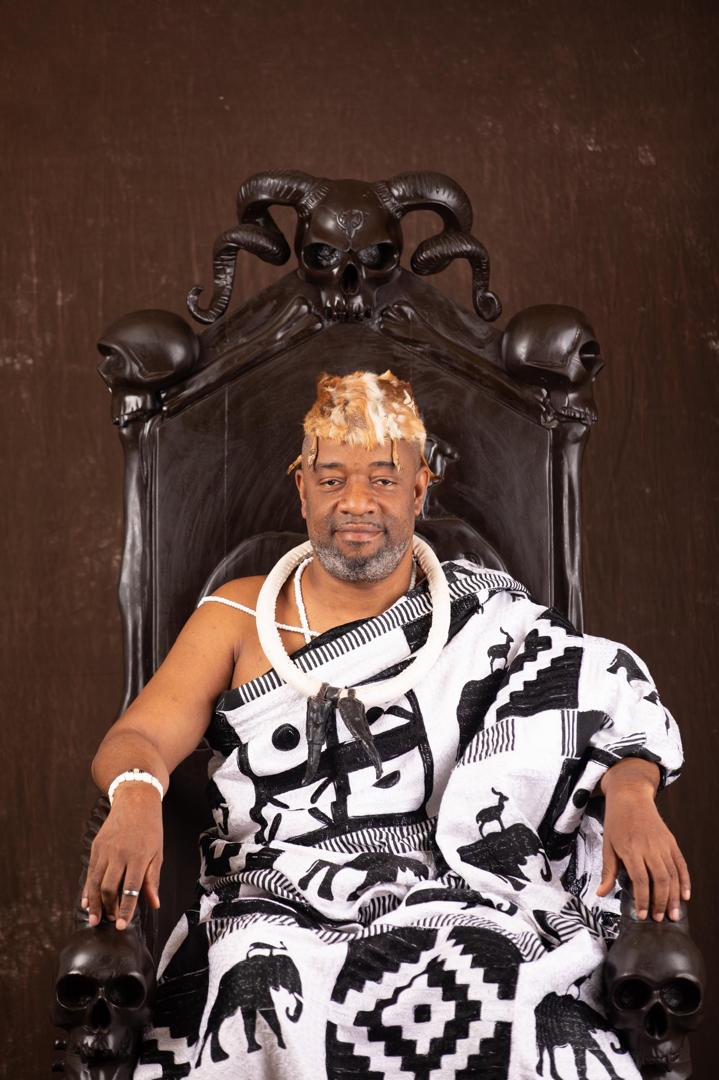The Ga Mantse chieftaincy, a revered institution embodying the very soul of the Ga people, has unfortunately been plagued by protracted disputes for years.
However, a powerful consensus is emerging, unequivocally affirming His Royal Majesty King Tackie Teiko Tsuru II as the rightful and legitimate occupant of the Ga Stool. This affirmation is not merely a legal decree but a robust tapestry woven from deep-seated customary traditions, official recognition, and, crucially, the decisive shift in allegiance from key traditional figures, including those who once championed rival claims.
The journey to the Ga Mantse throne is steeped in ancient rites and customary practices. King Tackie Teiko Tsuru II’s legitimacy stems fundamentally from his enstoolment, which was meticulously carried out in full accordance with these sacred Ga customs. The Ga Paramount Stool Dzasetse (Principal Kingmaker), Dr. Nii Tetteh Kwei II, along with a host of other Dzasefoi (Kingmakers) and traditional leaders, duly swore him in. This adherence to traditional protocols is the bedrock of his claim, earning him the respect and recognition of those who uphold Ga heritage.
The Chieftaincy Act
Article 277 of the 1992 Constitution of Ghana defines a chief as a person, who, hailing from the appropriate family and lineage, has been validly nominated, elected or selected and enstooled, enskined or installed as a chief or queen mother in accordance with the relevant customary law and usage.
Nii Adama latse ll, according to the Ga Mantse Palace, is not a Ga royal. He does not come from any of The three gates of the Nii Teiko Tsuru Royal Ruling House. His forebears are from Bator, and has no Ga royal bloodline, hence, his imposition on the Ga people is a sacrilege.
Beyond custom, the occupant of the throne’s position has been solidified by the Ghanaian legal framework. King Tackie Teiko Tsuru II has received an official gazettement, a critical step that formalizes a chief’s status within the national chieftaincy system.
While recent Court of Appeal rulings have generated discussion regarding the administrative restoration of Nii Tackie Adama Latse II’s name to the national register, the Office of the Ga Mantse under King Tackie Teiko Tsuru II has firmly clarified that these are procedural matters and do not determine the substantive issue of who rightfully occupies the Ga Mantse Stool.
That substantive matter, they rightly assert, remains within the exclusive jurisdiction of the Judicial Committees of the Traditional Councils and the Regional and National Houses of Chiefs, where it is currently pending. King Tackie Teiko Tsuru II has even initiated a challenge at the Supreme Court to nullify the High Court ruling.
Further bolstering King Tackie Teiko Tsuru II’s standing is the unwavering endorsement of the late Ga Manye (Queen Mother), Naa Dedei Omaedru II. A figure of immense respect and authority, her proclamation, describing him as “comely, calm, clever, civilized, and a true Ga Maŋtsɛ,” carried significant customary weight and was considered conclusive in matters of succession by many. This powerful matriarchal blessing underscores the traditional validity of his claim.
Perhaps one of the most compelling indicators of King Tackie Teiko Tsuru II’s irrefutable legitimacy lies in the evolving posture of prominent traditional leaders. Notably, Nii Gbese, Nii Ayi-Bonte II, the influential Gbese Mantse, now stands firmly in support of King Tackie Teiko Tsuru II. This is a particularly powerful shift, considering that Nii Ayi-Bonte II was once a key figure in the enstoolment and public outdooring of Nii Tackie Adama Latse II in 2011. His past actions demonstrated a clear allegiance to a rival claimant.
However, the current reality paints a different picture. Nii Ayi-Bonte II has publicly sworn an oath of allegiance to King Tackie Teiko Tsuru II, having been elevated to paramountcy status by him. His active participation in the Ga Traditional Council under King Tackie Teiko Tsuru II’s leadership, including performing crucial traditional rites like the “Odadao” to lift the ban on drumming, is a clear and undeniable recognition of the latter’s paramount authority.
This pivot by such a significant figure signals a growing consensus and acceptance of King Tackie Teiko Tsuru II’s leadership within the Ga traditional landscape. The shift reflects a growing desire for unity and stability, with key leaders coalescing around the recognized authority.
Moreover, the collective voice of the Ga Queen Mothers (Manyɛmɛi) and Asafoianyɛmɛi (Women Warriors) has resoundingly reaffirmed King Tackie Teiko Tsuru II as the sole legitimate Ga Mantse. They highlight his proper selection from the rightful royal lineage and his adherence to all necessary traditional rites. They praise his leadership for bringing unity, strategic development, and a renewed sense of Ga identity.
While the complexities of chieftaincy disputes can linger, the trajectory of support for King Tackie Teiko Tsuru II is undeniable. His enstoolment according to cherished Ga customs, his official gazettement, the endorsement of the revered late Ga Manye, and the crucial shift in allegiance from influential figures like Nii Gbese, all coalesce to form a powerful and compelling case. These elements collectively affirm that His Royal Majesty King Tackie Teiko Tsuru II is not merely a claimant, but the legitimate and recognized Ga Mantse, steering the Ga State towards unity, stability, and renewed prosperity.
By Raymond Ablorh







